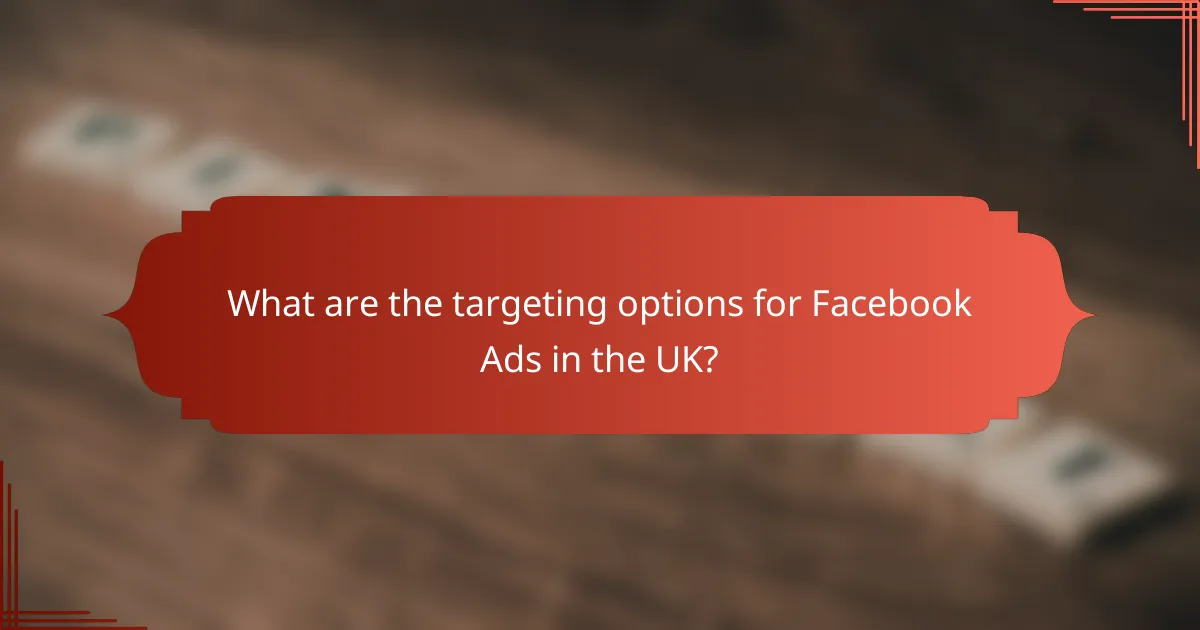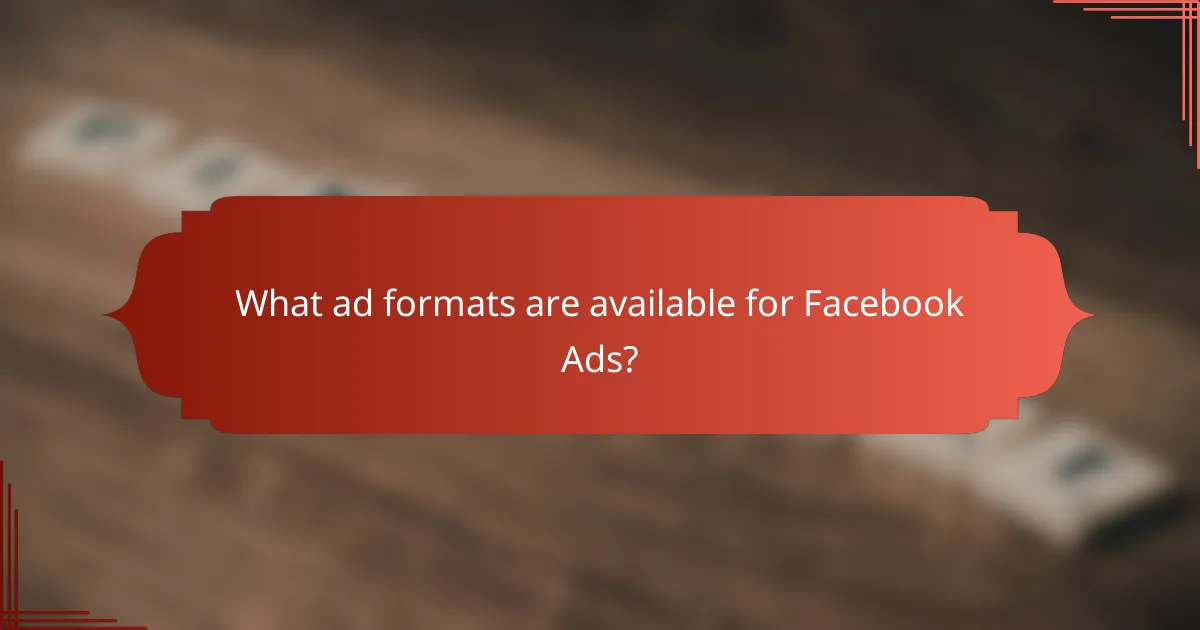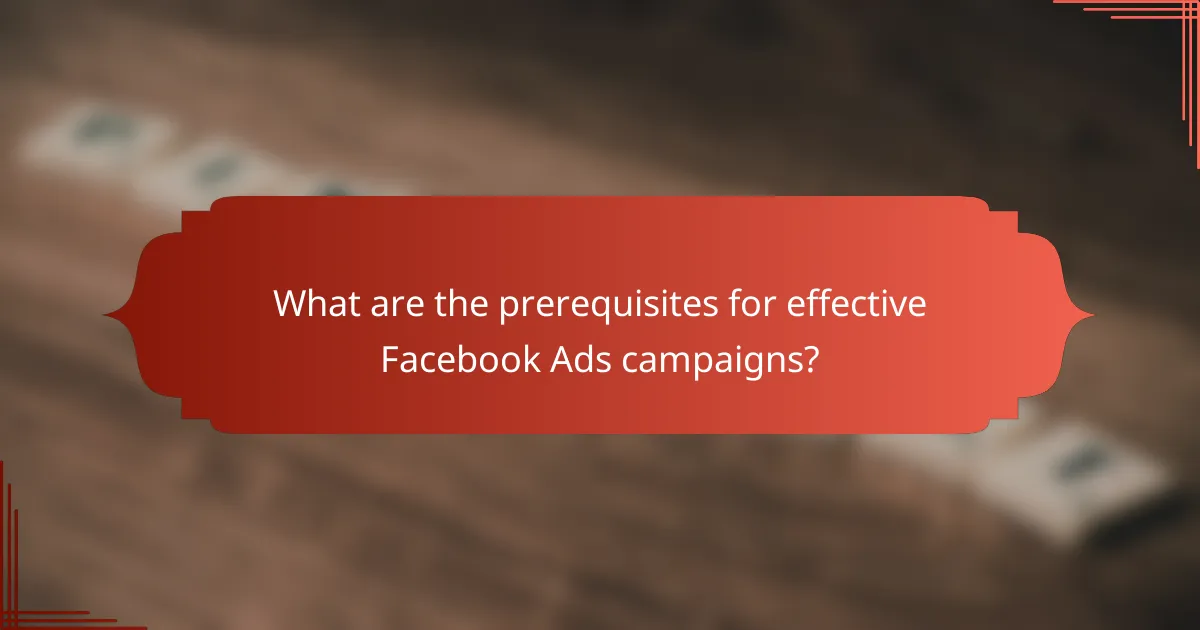Facebook Ads provide a robust platform for advertisers in the UK, featuring diverse targeting options that enable precise audience engagement through demographic, interest-based, and behavioral criteria. With a variety of ad formats tailored to different marketing objectives, businesses can enhance visibility and interaction effectively. Additionally, conversion tracking tools like the Facebook Pixel and Conversion API empower advertisers to measure the success of their campaigns by monitoring user actions.

What are the targeting options for Facebook Ads in the UK?
Facebook Ads in the UK offer a variety of targeting options to help advertisers reach their desired audience effectively. These options include demographic, interest-based, behavioral targeting, as well as custom and lookalike audiences, allowing for precise ad placements based on user characteristics and behaviors.
Demographic targeting
Demographic targeting allows advertisers to reach users based on specific characteristics such as age, gender, education level, and relationship status. For example, a brand selling luxury products might target users aged 30-50 with a higher education level.
When setting up demographic targeting, consider the audience’s preferences and how they align with your product or service. This approach can significantly enhance ad relevance and engagement.
Interest-based targeting
Interest-based targeting enables advertisers to reach users based on their interests, hobbies, and activities. Facebook gathers this data from user interactions, such as pages liked and content shared.
For instance, a fitness brand can target users interested in health and wellness, yoga, or running. This method is effective for reaching niche markets and can lead to higher conversion rates.
Behavioral targeting
Behavioral targeting focuses on users’ online behaviors, such as purchase history, device usage, and travel patterns. This type of targeting helps advertisers connect with users who have shown intent to buy or engage with similar products.
For example, a travel agency might target users who frequently search for holiday packages or have recently booked flights. Understanding user behavior can refine ad strategies and improve ROI.
Custom audiences
Custom audiences allow advertisers to upload their own customer lists to Facebook, enabling targeted advertising to existing customers or leads. This can include email addresses, phone numbers, or user IDs.
Using custom audiences is beneficial for retargeting campaigns, as it helps maintain engagement with users who have already shown interest in your brand. Ensure compliance with data protection regulations when using customer data.
Lookalike audiences
Lookalike audiences are created by Facebook based on the characteristics of your existing customers. This feature helps advertisers reach new users who share similar traits with their current audience.
To create a lookalike audience, you need a source audience, such as a custom audience or a pixel. This method can expand your reach effectively, targeting users likely to be interested in your offerings based on existing customer data.

What ad formats are available for Facebook Ads?
Facebook offers a variety of ad formats to cater to different marketing goals and audience engagement strategies. Each format has unique features that can enhance visibility and interaction, making it essential to choose the right one for your campaign.
Image ads
Image ads are the simplest format, consisting of a single image along with a caption and a call-to-action button. These ads are effective for showcasing products or services and can be used to drive traffic to your website or landing page.
When creating image ads, ensure that your visuals are high-quality and relevant to your message. A/B testing different images can help identify which visuals resonate best with your audience.
Video ads
Video ads allow you to share dynamic content that can capture attention more effectively than static images. These ads can range from short clips to longer storytelling formats, providing opportunities for deeper engagement.
Consider keeping videos concise, ideally under 30 seconds, to maintain viewer interest. Adding captions can also enhance accessibility and engagement, especially for users watching without sound.
Carousel ads
Carousel ads enable you to showcase multiple images or videos in a single ad unit, allowing users to swipe through different visuals. This format is particularly useful for displaying a range of products or telling a story in segments.
Each card in a carousel can link to different landing pages, making it a versatile option for driving traffic. Aim for a cohesive theme across the cards to maintain user interest and engagement.
Collection ads
Collection ads combine video or image elements with a product catalog, allowing users to browse and purchase products directly from the ad. This format is ideal for e-commerce businesses looking to streamline the shopping experience.
When using collection ads, ensure that your product images are appealing and that the catalog is well-organized. This can lead to higher conversion rates as users can easily explore and purchase items.
Slideshow ads
Slideshow ads create lightweight video-like experiences using a series of images, text, and sound. This format is beneficial for advertisers with limited resources, as it can be created from existing images without the need for extensive video production.
Utilize slideshow ads to tell a story or highlight multiple features of a product. Keeping the slideshow short and visually engaging can help maintain viewer interest and drive action.

How can businesses track conversions from Facebook Ads?
Businesses can track conversions from Facebook Ads using tools like the Facebook Pixel, Conversion API, and custom conversion events. These methods allow advertisers to measure the effectiveness of their ads by monitoring user actions on their websites or apps.
Facebook Pixel
The Facebook Pixel is a piece of code that businesses place on their websites to track user interactions. It collects data on actions such as purchases, sign-ups, and page views, which helps in measuring ad performance and optimizing campaigns.
To implement the Facebook Pixel, create a pixel in your Facebook Ads Manager, then add the generated code to your website’s header. Ensure that you test the pixel to confirm it’s tracking correctly, as misconfigurations can lead to inaccurate data.
Conversion API
The Conversion API allows businesses to send web events directly from their servers to Facebook, enhancing data accuracy and privacy. This method is beneficial for tracking conversions that occur offline or in environments where the Facebook Pixel may not function optimally.
To use the Conversion API, set up a server-side integration that sends event data to Facebook. This can be more complex than using the Pixel, but it provides a more reliable way to track conversions, especially in compliance with data regulations.
Custom conversion events
Custom conversion events enable businesses to define specific actions they want to track beyond standard events. This flexibility allows for tailored tracking that aligns with unique business goals, such as tracking specific product purchases or lead form submissions.
To create a custom conversion event, go to the Events Manager in Facebook Ads and define the criteria based on URL or parameters. This targeted approach helps in understanding user behavior and optimizing ad strategies effectively.
Attribution settings
Attribution settings determine how conversions are credited to different ads and campaigns. Facebook offers various attribution models, such as last-click or first-click, which can significantly impact how businesses assess their ad performance.
Choosing the right attribution model is crucial for accurate conversion tracking. Regularly review and adjust these settings to align with your marketing goals and ensure that you are capturing the full value of your advertising efforts.

What are the prerequisites for effective Facebook Ads campaigns?
Effective Facebook Ads campaigns require clear objectives, a well-defined target audience, and a solid understanding of ad formats and tracking methods. These elements are crucial for maximizing engagement and achieving desired outcomes.
Clear campaign objectives
Establishing clear campaign objectives is essential for guiding your Facebook Ads strategy. Objectives can range from increasing brand awareness to driving website traffic or generating leads. Defining these goals helps in selecting the right ad formats and targeting options.
When setting objectives, consider using the SMART criteria: Specific, Measurable, Achievable, Relevant, and Time-bound. For example, instead of aiming to “increase sales,” specify “increase online sales by 20% in the next quarter.” This clarity allows for better tracking and optimization.
Common pitfalls include setting vague objectives or failing to align them with overall business goals. Regularly review and adjust your objectives based on performance data to ensure they remain relevant and achievable.